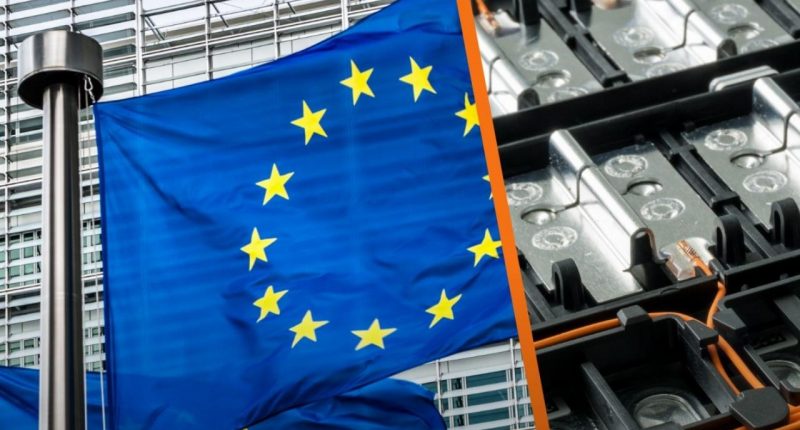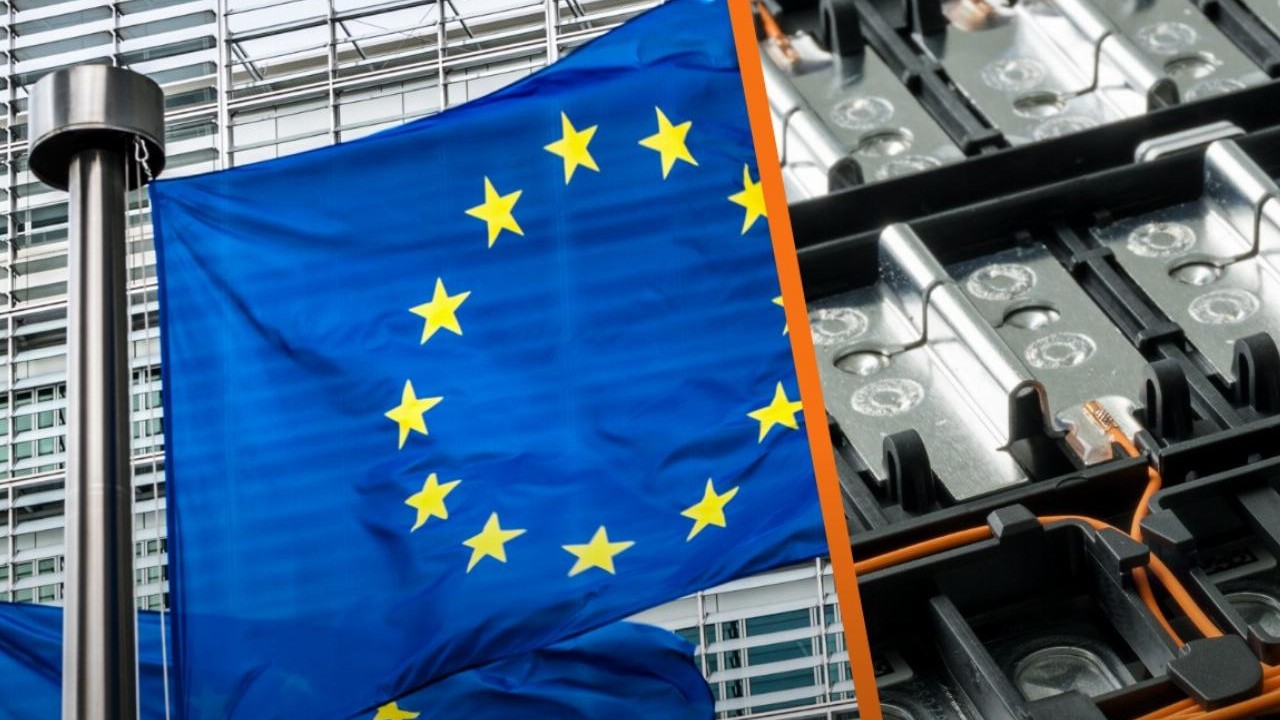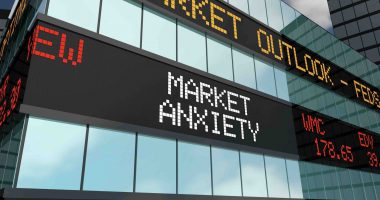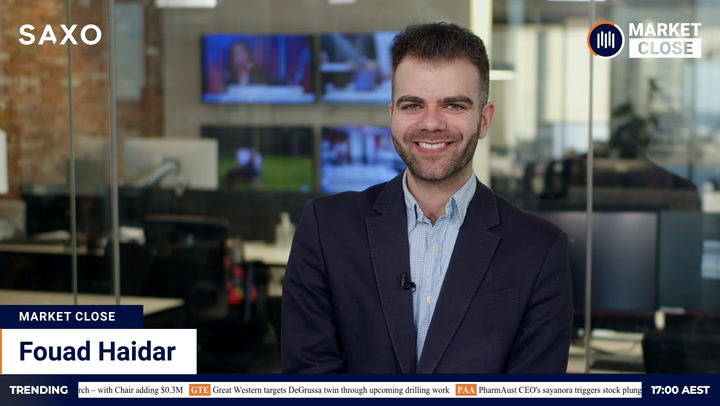After soaring through 2022 and experiencing continued strength into 2023, lithium prices are on the way back down.
A far healthier body of global supply, as well as slowing EV sales, are two large factors informing investor psychology behind trades for the metal.
The market’s enthusiasm for what is most simply described as “the battery thematic” can also cloud a more fundamental truth about the price performance of lithium, as a commodity, in recent history.
The fundamental truth in question is that a large part of lithium’s bull run across the last eighteen months was simply due to a shortage of supply – economics 101. But now the world has caught up.
It isn’t hard to see why. Just look at ASX-wide newsflow on any given day – it feels like there’s a new pivot to lithium by a microcap explorer every second day.
And with big mergers still carrying on, lithium hype remains fixed – despite tanking prices.
This isn’t just an Australian phenomenon, either. It’s happening globally. Just look at Canada’s increasingly populated James Bay region.
In turn, commodity traders (and suppliers, refiners and marketers) are seeing a world now flush with lithium, and somewhat reduced demand – which is impacting bullish theses on price across the board.
That’s ultimately contributing to the decline of lithium prices as commodity traders look for more exciting prospects, like gold, iron ore, and dare I say it, even bitcoin.
But touching on a basic fundamental of macroeconomics, we can observe this isn’t a cause for concern, or a shock to the system – it’s a natural phenomenon.

Pork cycle rundown
In economics this phenomenon of high prices driving investment in production of a commodity until such time prices drop, due to increased supply, has a name: it’s called the “pork cycle”.
Stick with me – it’s called that but isn’t really about pigs. Not in this case, anyway.
The pork cycle works like this:
- A demand for pork emerges, and so one or two farmers begin raising pigs. While pig supply is limited, prices are high – at this point of the cycle, pork is a rare good. Only those with money can afford it and so it becomes a status symbol – and seductive investment.
- More farmers realise the value potential and also begin raising pigs. As more and more piggeries come ‘online,’ the pork prices start to decrease as supply becomes more voluminous.
- At some point, demand and supply equalise; or supply may outstrip demand. Pork may become a commodity, or consumers may get bored of pork. In the example of lithium, it’s become a commodity. Suddenly, nobody is making as much money raising and selling pigs.
- In turn, farmers turn away from raising pigs and go back to more valuable crops or livestock.
- As a result, the pork supply begins to decline.
- After a number of years, there are fewer farmers raising pigs, and so pork goes back to being a high-priced item.
- The cycle resumes again.
This porcine example, despite its odd name, is one of the most fundamental aspects of understanding macropsychology and macroeconomics. It’s true for nearly every kind of good. Most authors posit it happens on a 5-year cycle.
And we’re seeing the exact same thing happen with lithium, right now.
It isn’t just lithium itself – the price of a lithium-ion battery pack has declined 14 per cent since 2022, according to analysis from BloombergNEF.
Benchmark Mineral Intelligence, meanwhile, expect the global lithium market to remain oversupplied until 2028; and Albermarle cut back its earnings forecasts in November of 2023 eyeing lower lithium prices.
One should also note BMI’s 2028 prediction rings true for the pork cycle analysis – we’re five years away, per their analysts, from the start of the next cycle.
Price recovery chatter to permeate 2024
So what will the lithium market look like in 2024?
The first question on everybody’s minds, of course, is when prices will rise again. Could it happen earlier?
While BMI suggests 2028 will be the next great resurgence of upward pressure, other analysts are betting price recovery comes sooner.
One would be wise to observe that the fall in lithium prices, while part of the pork cycle, also overlaps with the current decline of the Chinese economy. Perhaps a shock 2024 recovery in the Chinese economy could turn things around.
Should that occur, it will be a surprise to economists, who largely expect Chinese recovery to take years. Fitch Ratings anticipates a troubled China will hold back 2024 world growth outlook.
As of December 2023, China’s economy is back in deflation, according to its latest data.

So, that’s one big thematic heading into 2024: lithium prices.
How low they will continue to go, and conversations about prospects for a 2024 price recovery are likely to prove popular.
But then there’s another thematic surrounding lithium from 2023 set to carry into 2024, and one which probably isn’t going anywhere in the years after.
I’m talking about supply chain security.
Supply chain agendas locked in
By now, we’re all familiar with the spiel.
The emergence of COVID-19 led to an economic shock and downturn; businesses ramped down operations, then demand bounced back in 2021 stronger than people were expecting, and as a result, supply chains everywhere became bogged.
World container indexes hit record highs in September 2021; countries with valuable materials began holding onto their own reserves, and the price of everything went up – starting the great inflation story that we’re still dealing with.
Then Russia invaded Ukraine, China-US relations got worse, and the importance of geopolitical allegiances entered the fray of what was already an economic supply chain nightmare – if not an acute failure of globalisation that we’ve never seen before.
In turn, large swathes of the world realised it depends on Russia for energy, and every major Western country realised it relies on China for, well, pretty much every single battery metal.
Every major Western country has a plan
One big reason why lithium supply chain security discussions will permeate 2024 is because of support from major world governments in every single Western country.
In July, Canberra unveiled its Critical Minerals Strategy 2023-2030. The foremost objective of the strategy is to “create diverse, resilient and sustainable supply chains.”
The US Department of Energy’s Critical Materials Strategy has been in place since 2021, which describes supply chain security as essential to not only “economic prosperity,” but also “national defence”.
Biden’s 2022 Inflation Reduction Act – really a climate change spending package rebranded under a different name to win Republican support – also includes a wide raft of measures intended to incentivise the private sector to help establish a domestic US supply chain for lithium and other battery metals.
England, too, has its own counterparts. The UK Critical Minerals Strategy, and the related UK Battery Strategy, both aim to facilitate the establishment of secure supply chains – with lithium and other battery or tech metals a large focus.
Canada has its own critical minerals strategy, however, New Zealand hasn’t released any major strategy of the same ilk since 2019.
Looking at the EU
And that brings us to the European Union.
The EU has a number of strategies and overarching goals in place, but its biggest is the Green Deal Industrial Plan.
Europe and its scorned ex (the UK) are arguably both closer to the supply chain issue than other countries may be – both jurisdictions have been deeply scarred in the last few years.
Both the EU and UK economies were absolutely slammed by the rise in gas prices borne from sanctions placed on Russia following its invasion of Ukraine.

While this isn’t related to lithium, the EU has had a closer look at what happens when supply chains not only break down but are actively weaponised. This is probably why the EU’s rationale for its Green Deal Industrial Plan includes an entire section recounting the European 2022 energy crisis.
For this reason – and the EU’s heightened commitment to net-zero targets, as well as one of the world’s highest EV penetration rates – one can rationalise the EU is more motivated to really follow through on its word.
Pursuant to its Green Deal Industrial Plan goals, the EU has invested a total of €162 million into domestic lithium-ion battery cathode production capacity.
The EU government is particularly focused on building out its capacity to secure everything it needs to produce and supply lithium-ion batteries.
Decarbonisation of the transport sector is a huge part of the jurisdiction’s net zero plans and so EVs are required for it to match its targets.
And then there’s also the China issue. Reading between the lines, when Western countries say they want to secure domestic lithium and EV supply chains, they mean they want to cut reliance on China.
If this feels like a reach or a large assertion, it isn’t – EU lawmakers agreed on a deal back in November to boost the domestic supply of critical minerals, principally to reduce reliance on China.
Remember, the EU is still well aware of what happens when you’re reliant on a third party for your feedstock – just look at that gas price chart again.
The EU is also generally well known for its more progressive stance on environmental protections broadly than other Western counterparts.
For anecdotal evidence, consider that Portugal hit a 100 per cent renewable milestone, earlier this year powering the country entirely on green energy for six consecutive days. Spain also powered its economy for 9 hours using only renewables in May.
The EU prides itself on its green image – and the Eurozone’s myriad government apparatuses are collectively signalling a bullish stance on lithium to remain as 2030 climate targets draw nearer.
The publication of the EU’s 2024 Budget further confirms this, with no shortage of spending for climate projects broadly. Green spending was a key priority for the budget according to the European Commission.
ASX stocks to watch
So which ASX stocks are exposed to the EU lithium space?
There are several listed companies operating in Europe.
The straightforwardly named European Metals (ASX:EMH) is one of the well-known ones, as is Sweden-based graphite player Talga Group (ASX:TLG).
Altech Batteries (ASX:ATC) is setting up shop with its lithium-ion competitor tech in Saxony, Germany, while Euro Manganese (ASX:EMN) continues hunting for its namesake metal in the Czech Republic.
All companies in the region have been closely watching the EU government’s evolving network of support for green developments.
So who’s producing lithium?
Note: all below information is correct as of market close on Friday, December 15, 2023.
Infinity Lithium
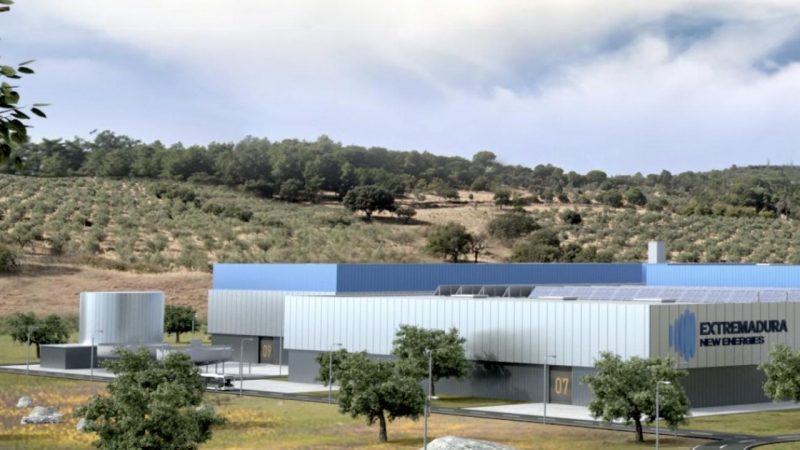
- Share price: 10.3 cents
- Market cap: $47.415 million
- Project location: Spain
- Shares issued: 462.5 million
- Daily share turnover (4w avg): 346,714
- YTD performance: -14.58 per cent
- 1-year returns: -31.67 per cent
Infinity Lithium is developing the San José lithium project in Spain’s Extremadura region, where it holds a 75 per cent stake in the play.
The stock rallied in November of 2023 when the company won €18.8 million from the government to develop the project.
The Market Herald recently spoke to General Manager Justin Samulski at the RIU Resurgence Conference in Perth, Western Australia.
Mr Samulski pointed to a recent scoping study update supporting a 33,000 tonne-per-year output capacity for lithium hydroxide, a key battery ingredient – and a 26-year project life.
That 33ktpa figure reflected a 70 per cent upgrade to metrics previously included in an earlier version.
While share price gains clocked in November have been sold off, the company is clearly backed by support from the Spanish government, with a project that harmonises with the EU’s overall net zero energy targets.
One consideration is that the stock is relatively thinly traded.
European Lithium (ASX:EUR)
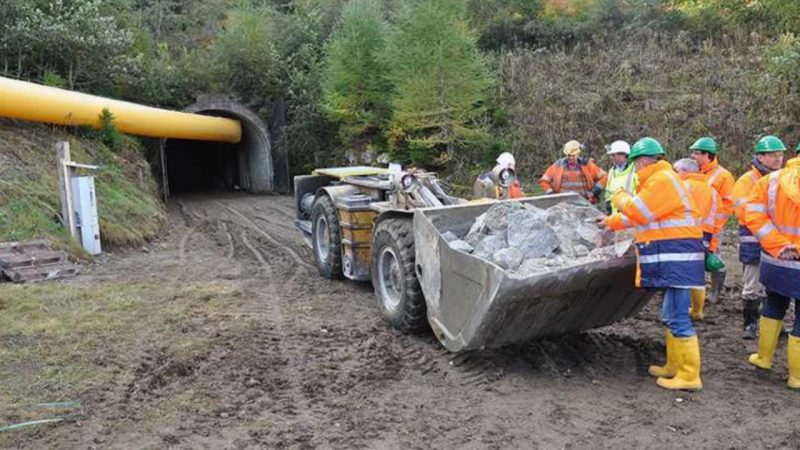
- Share price: 6.6 cents
- Market cap: $92.01 million
- Project location: Austria
- Shares issued: 1.394 billion
- Daily share turnover (4w avg): 768,434
- YTD performance: -10.81 per cent
- 1-year returns: -13.16 per cent
European Lithium oversees the Wolfsberg lithium project in Carinthia, around 250 kilometres away from the Austrian capital of Vienna – and is probably the most interesting stock on this list.
European Lithium has an attention-grabbing story set to truly get going in 2024.
In October last year, the company brokered a deal with NASDAQ-listed Sizzle Acquisition Corp with a view towards creating a third entity called Critical Metals Corp.
Shareholders are on board, with the move approved by European Lithium shareholders back in January of this year. EUR is dual-listed on the ASX and Frankfurt stock exchanges.
In early-mid November, Chairman Tony Sage flagged that the company was in the final stages of seeking approval from the US regulator to list Critical Metals Corp on the NASDAQ exchange, under the ticker NASDAQ:CRML.
With spodumene samples already shown to be able to produce high-purity battery-grade lithium carbonate equivalent at a pilot plant, and a DFS underpinning a 15-year project life, a NASDAQ listing will likely be what the stock needs to turn shares back into the green.
European Lithium is also set to receive US$750 million (A$1.18 billion) worth of CRML stock.
One to watch.
Vulcan Energy (ASX:VUL)

- Share price: $2.53
- Market cap: $435.3 million
- Project location: Germany
- Shares issued: 172.07 million
- Daily share turnover (4w avg): 828,801
- YTD performance: -60.0 per cent
- 1-year returns: -61.2 per cent
Vulcan Energy Resources is working in Germany’s Upper Rhine Valley region to develop a “zero carbon” lithium project that also produces – and uses – underground geothermal power.
The company has multiple strengths to boast – underscored perhaps by the fact this relative smallcap is covered by stockbrokers. Seven brokers currently rate the stock a buy and one broker rates it hold. Zero brokers rate the stock as a sell.
Vulcan makes no secret that it has the largest lithium resource in Europe.
That resource is a brine resource and not hard rock, but that ties into Vulcan’s overall project vision. Its lithium deposits are located near underground sources of geothermal energy, which the company intends to tap to power operations of key assets.
Some of those key assets are basically ready to go – namely the company’s Lithium Extraction and Optimisation Plant, in Germany, which opened in Landau after years of work late last month.
A recent bridging study has also seen the company greatly reduce the overall capital expenditure needed to bring its vision to life. The project has support from relevant German governments and stands out as one of the more advanced lithium producers in Europe.
The stock may also ring a bell to those familiar with market news. Vulcan was engaged in a lawsuit with short sellers J Capital, following which, Vulcan successfully sued J Capital in an Australian court.

